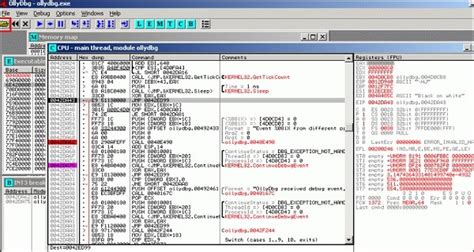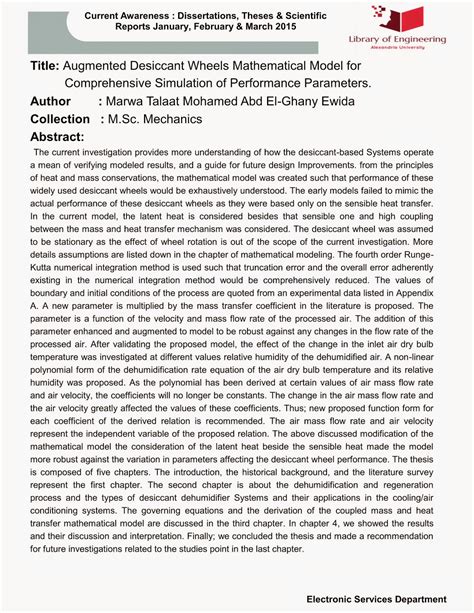Contents
- Introduction to Reverse Engineering
- Legal and Ethical Considerations
- Reverse Engineering Compiled Libraries
- Disassemblers and Decompilers
- Debugging and Tracing
- Reverse Engineering Source Code
- Code Analysis Techniques
- Automated Code Analysis Tools
- Reverse Engineering Strategies
- Black Box Testing
- White Box Analysis
- Gray Box Approach
- Documenting and Sharing Results
- Frequently Asked Questions (FAQ)
- Conclusion
Introduction to Reverse Engineering
Reverse engineering is the process of analyzing a system or component to identify its parts, their interrelationships, and to create representations of the system in another form or at a higher level of abstraction. When applied to software libraries, reverse engineering aims to understand the inner workings, algorithms, data structures and APIs implemented by the library.
Common reasons for reverse engineering project libraries include:
- Understanding undocumented or poorly documented functionality
- Identifying bugs, vulnerabilities or inefficiencies
- Extracting reusable components, modules or code snippets
- Developing interoperable or drop-in replacement libraries
- Analyzing closed-source or proprietary libraries
- Learning from well-designed libraries to improve coding skills
Reverse engineering requires a strong understanding of programming concepts, low-level details like memory management and calling conventions, and familiarity with tools for analyzing binaries and source code.

Legal and Ethical Considerations
Before reverse engineering any library, it’s critical to consider the legal and ethical implications. Many commercial libraries explicitly prohibit reverse engineering in their license agreements. Open source libraries may restrict certain uses of derived works. Reverse engineering may also violate copyright laws or patents in some jurisdictions.
From an ethical perspective, reverse engineering should not be used to:
- Steal intellectual property or plagiarize code
- Create malicious software or circumvent security measures
- Violate terms of service or acceptable use policies
- Exploit or harm users of the library
Always carefully review licenses, consult legal experts, and use your own judgment before proceeding with reverse engineering. Strive to create value and advance knowledge while respecting the rights of library authors and users.

Reverse Engineering Compiled Libraries
Many project libraries are distributed as compiled binaries without source code. Reverse engineering compiled libraries requires low-level tools and techniques to analyze machine code and reconstruct higher-level semantics.
Disassemblers and Decompilers
Disassemblers convert binary machine code into assembly language, providing a more human-readable representation of the library’s functionality. Disassemblers like IDA Pro, Ghidra, and Hopper are popular choices that support a wide range of processor architectures and executable formats.
Decompilers go a step further by attempting to reconstruct high-level source code from assembly language. While decompilation is an imperfect process, it can provide insights into the original algorithms and data structures. Decompilers like Hex-Rays and RetDec can be useful for understanding complex compiled libraries.
Debugging and Tracing
Dynamic analysis techniques involve running the compiled library and observing its behavior. Debuggers allow setting breakpoints, inspecting memory and registers, and stepping through code execution. Tracing tools log function calls, arguments, and return values, which can help understand the library’s interfaces and usage patterns.
Binary instrumentation frameworks like Intel PIN and DynamoRIO enable injecting custom profiling and analysis code into the library at runtime. This allows tracking specific events, data flows, or performance metrics without modifying the library itself.

Reverse Engineering Source Code
When the library’s source code is available, reverse engineering can be performed at a higher level of abstraction using code analysis techniques and tools. While having source code eliminates the need for low-level binary analysis, it still requires effort to comprehend complex codebases.
Code Analysis Techniques
Manual code review involves reading through the library’s source files and documentation to understand its structure, interfaces, and implementation details. This requires strong domain knowledge and can be time-consuming for large codebases.
Exploratory coding involves writing small test programs that exercise the library’s functionality to understand its behavior and API usage patterns. This is particularly useful for libraries with minimal documentation or examples.
Call graph analysis involves building a graph representation of function calls within the library, which can help identify important code paths, dependencies, and potential bottlenecks.
Data flow analysis tracks how data propagates through the library’s variables, function parameters, and return values. This can uncover insights into the library’s state management, error handling, and security vulnerabilities.
Automated Code Analysis Tools
Static analysis tools parse the library’s source code without executing it, using techniques like abstract syntax tree (AST) analysis, data flow analysis, and pattern matching to detect common coding issues, bugs, and security vulnerabilities.
| Tool | Language | Description |
|---|---|---|
| Coverity | Multi | Commercial static analysis for finding bugs and security issues |
| FindBugs | Java | Open source tool for detecting bug patterns |
| Clang | C/C++ | Compiler-based static analyzer for detecting coding issues |
| PyLint | Python | Static code analysis tool for checking coding standards |
| RuboCop | Ruby | Static code analyzer and formatter for enforcing best practices |
Dynamic analysis tools instrument the library’s code and monitor its execution to detect runtime issues like memory leaks, race conditions, and performance bottlenecks.
| Tool | Language | Description |
|---|---|---|
| Valgrind | C/C++ | Memory debugger and profiler for detecting memory-related bugs |
| DTrace | Multi | Dynamic tracing framework for analyzing runtime behavior |
| JProfiler | Java | Profiling tool for analyzing performance and memory usage |
| Python Profiler | Python | Built-in modules for profiling Python code execution |
| Ruby-Prof | Ruby | Profiling tool for measuring code performance and optimizing |
Reverse Engineering Strategies
There are different strategies for approaching the reverse engineering process based on the available information and analysis techniques:
Black Box Testing
Black box testing involves analyzing the library’s functionality solely through its external interfaces and documentation, without knowledge of its internal implementation. This approach is useful when source code is not available and binary analysis is not feasible.
Black box testing techniques include:
- Fuzz testing: Generating random or semi-random inputs to test the library’s robustness and uncover crashes or unexpected behavior
- Boundary value analysis: Testing edge cases and limits of the library’s input parameters to verify proper handling
- Equivalence partitioning: Dividing the library’s input space into classes that are expected to exhibit similar behavior and testing representative values from each class
White Box Analysis
White box analysis involves examining the library’s internal implementation details, either through source code review or binary analysis. This approach provides a more comprehensive understanding of the library’s algorithms, data structures, and control flow.
White box analysis techniques include:
- Code coverage analysis: Measuring how much of the library’s code is exercised by test cases to identify untested or dead code
- Control flow analysis: Analyzing the possible execution paths through the library’s code to identify potential bugs or inefficiencies
- Symbolic execution: Executing the library’s code with symbolic variables to reason about all possible input values and uncover edge cases
Gray Box Approach
Gray box testing combines elements of black box and white box analysis, leveraging some knowledge of the library’s internals while still focusing on external behavior. This approach is useful when partial source code or documentation is available.
Gray box techniques include:
- API analysis: Examining the library’s public interfaces and documentation to understand its contracts and usage patterns
- Reverse engineering protocols: Analyzing network traffic or inter-process communication to understand how the library interacts with other components
- Partial code review: Focusing source code analysis on critical or security-sensitive parts of the library
Documenting and Sharing Results
Documenting the findings and insights gained from reverse engineering is crucial for making the knowledge accessible and reusable by others. Use clear, concise language and include examples, diagrams, and references to relevant source code or binary offsets.
Consider sharing your reverse engineering results with the community through:
- Blog posts or articles detailing your analysis techniques and findings
- Presentations or talks at conferences or meetups
- Open source tools or scripts that automate parts of the analysis process
- Contributing to existing documentation or writing new guides for the library
Be mindful of intellectual property rights and potential legal issues when sharing reverse engineering information. Always give proper attribution and credit to the original library authors.
Frequently Asked Questions (FAQ)
What are the most common file formats for compiled libraries?
The most common file formats for compiled libraries vary by platform:
- Windows: Dynamic Link Libraries (DLL) and Static Libraries (LIB)
- Linux: Shared Objects (SO) and Static Archives (A)
- macOS: Dynamically Linked Libraries (DYLIB) and Static Archives (A)
How can I protect my own libraries from reverse engineering?
While there is no foolproof way to prevent reverse engineering, you can make it more difficult by:
- Obfuscating your source code before compiling
- Stripping debugging symbols from the binary
- Using packing or encryption techniques on the compiled binary
- Implementing anti-debugging or anti-tampering measures
- Offering your library as a web service rather than a distributable binary
What are some common anti-patterns to look out for when reverse engineering?
Some common anti-patterns that can make reverse engineering more difficult include:
- Excessive use of function pointers or virtual functions
- Deeply nested or obfuscated control flow
- Overuse of macros or preprocessor directives
- Lack of meaningful identifier names or comments
- Unusual or non-idiomatic code patterns
How do I handle encrypted or packed binaries during reverse engineering?
Encrypted or packed binaries require an additional unpacking step before they can be effectively analyzed:
- Identify the packing or encryption scheme used (e.g. UPX, VMProtect, custom packer)
- Use specialized tools or techniques to unpack or decrypt the binary (e.g. dynamic unpacking, memory dumping)
- Analyze the unpacked binary using standard disassembly or debugging techniques
What are some good resources for learning more about reverse engineering?
Some great resources for learning reverse engineering include:
- Books:
- “Reversing: Secrets of Reverse Engineering” by Eldad Eilam
- “Practical Reverse Engineering” by Bruce Dang et al.
- “The IDA Pro Book” by Chris Eagle
- Online Courses:
- “Reverse Engineering for Beginners” by Dennis Yurichev (free online book)
- “Reverse Engineering Malware” by Dr. Josh Stroschein (Pluralsight course)
- Websites:
- Reddit Reverse Engineering forum (r/ReverseEngineering)
- “Reverse Engineering for Beginners” blog (https://beginners.re/)
- OpenSecurityTraining.info (free courses on low-level software)
Conclusion
Reverse engineering project libraries is a valuable skill for understanding how existing code works, finding bugs or vulnerabilities, and extracting useful functionality to reuse. By combining static and dynamic analysis techniques, using appropriate tools, and following ethical guidelines, you can gain deep insights into the internals of any library.
As with any skill, practice is key to becoming proficient at reverse engineering. Start with small, open source libraries and work your way up to more complex and proprietary ones. Take on challenges like crackmes or CTF competitions to test your skills and learn from others in the community.
Remember that reverse engineering is a powerful tool that should be used responsibly. Always respect intellectual property rights, adhere to licensing terms, and strive to create value rather than cause harm.
With dedication and practice, you’ll be able to unravel the mysteries of any project library and leverage that knowledge to build better software.

No responses yet